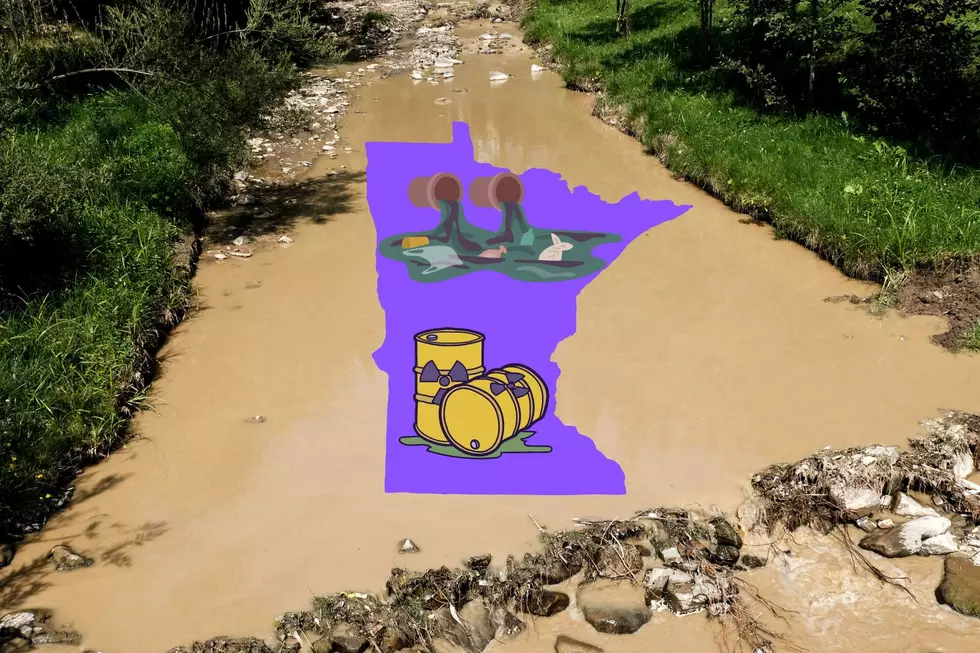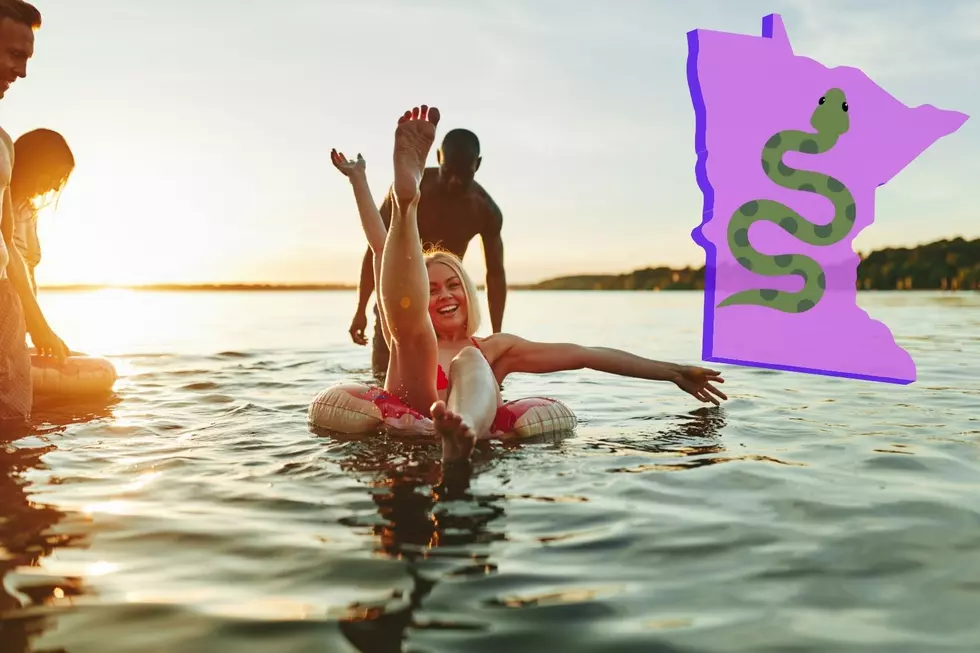
Here Are 4 Of The Most Snake-Infested Lakes In Minnesota
It's hard to find a better time during a Minnesota summer than a lake day. It doesn't matter if you're swimming at a beach or out on the water fishing, tubing, waterskiing, or just partying in slow motion, lake days are some of the best days.
However, lakes can be the home of some things that can ruin the day for some people. For example, before we drop anchor to turn on the tunes and swim, the kids always need to know if we're deep enough to avoid weeds. I get it, who wants to swim with weeds rubbing your legs?
Recently, during a beach day, we spotted something in the shallow water that they thought was even worse than swimming with weeds. Snakes. As Indiana Jones famously said, "Why did it have to be snakes?".
READ NOW: Minimum Age To Legally Drive ATVs In Minnesota May Surprise You
Granted, these weren't monsters by any means, likely a couple of garter snakes swimming around, and while the kids didn't feel like swimming with them, they did enjoy following them along the shoreline to see if they'd spot more.
For some people, however, even seeing one snake in the water would make them stay on shore for the day. So, for those in Minnesota who don't much feel like sharing their lake day with snakes, what are the lakes they should try to avoid?
According to AZ Animals, while Minnesota doesn't have sea snakes, which are fully aquatic snakes, the state does have semi-aquatic snakes. The three species of these water snakes found in Minnesota are:
- The Northern Water Snake. Measuring 2 to 3 feet long, the northern water snake is thick, with dark marks and bands on a lighter body. They can be in a variety of colors and are most commonly seen during the day in vegetation or swimming in the water.
Plains Garter Snake. Growing up to 3 feet long the plains garter snake are incredible swimmers that can be found throughout the state. They are either brown or black, with orange or yellow colored stripes down their bodies and down each side, which are easily distinguishable from the color of their bellies. While they can bite if handled, they are not venomous. Interesting side note, when threatened, they will defecate and release a foul odor. We all have a friend like that.
Common Garter Snake. These are some of the most commonly sighted water snakes. They occur throughout the state inhabiting suburban and rural areas along lakes, rivers, hilltops, and in some regions, backyards. Common garter snakes in eastern Minnesota tend to be more yellow than red, and their bellies are gray or cream with no visible pattern. They also have narrow black stripes on the edges of their scales, and some have red under their tails.

The Four Most Snake-Infested Lakes in Minnesota
What Minnesota lakes should those with an aversion to snakes avoid?
1. Lake Pepin. Known as "one of the Midwest’s best-known natural playgrounds", Lake Pepin is the largest lake on the Mississippi River so it naturally has an abundance of plant life and animals. Two of the three species of water snakes occur in Lake Pepin, the common garter snake, and the northern water snake.
2. Red Lake. Situated in northern Minnesota's Beltrami County, Red Lake is the largest natural freshwater lake in the state. A peninsula separates Red Lake into two sections, known as the Upper and Lower Red Lake. The lake is home to the common garter snake and plains garter snake, making it one of the most snake-infested lakes in Minnesota.
3. Otter Tail Lake. Covering an area of about 14,000 acres, with a maximum depth of 120 feet, Otter Tail Lake is one of the largest lakes in Minnesota. It's located in the west-central part of the state, and both the common garter snake and the plains garter snake love to call this lake home.
4. Lake Of The Woods. Known as the "Walleye Capital Of The World", Lake of the Woods is an enormous body of water spanning over 68 miles long, with the longest lake shoreline in the world, over 25,000 miles! It borders Minnesota and the Canadian provinces of Ontario and Manitoba and the common garter snake is the only water snake to commonly inhabit Lake of the Woods.
READ NOW: Are These Really The 10 Snobbiest Cities In Minnesota?
All four of the bodies of water above provide an abundance of fun outdoor activities both in the water and on the shore, but if snakes just aren't your thing, then you'll want to look for other places to go. The nice part is that Minnesota has an abundance of lakes to choose from, somewhere in the neighborhood of 10,000, in fact.
Quiz: Do you know your state insect?
Gallery Credit: Andrew Vale

LOOK: 20 of the biggest insects in the world
Gallery Credit: Andrea Vale
More From Quick Country 96.5









